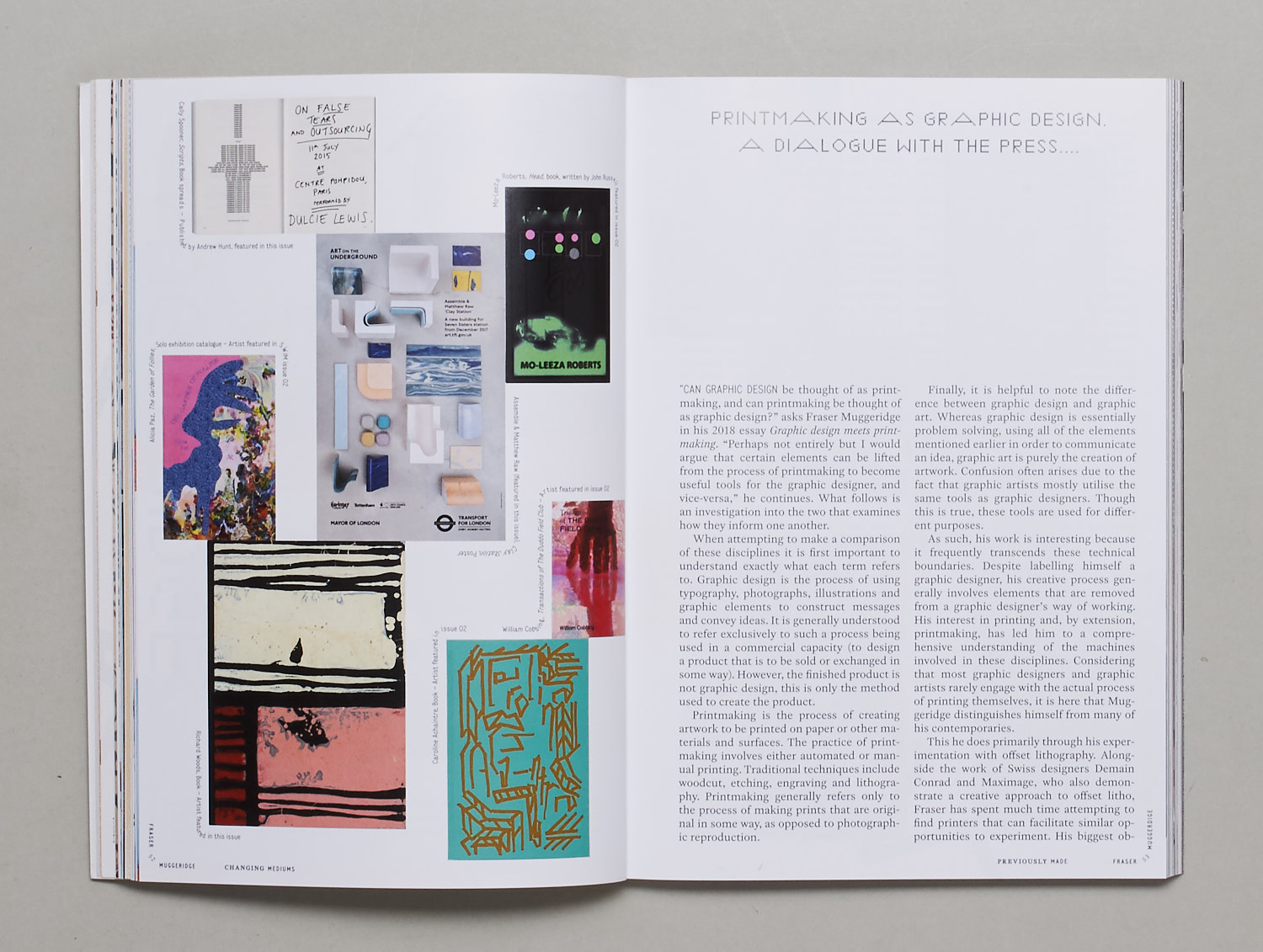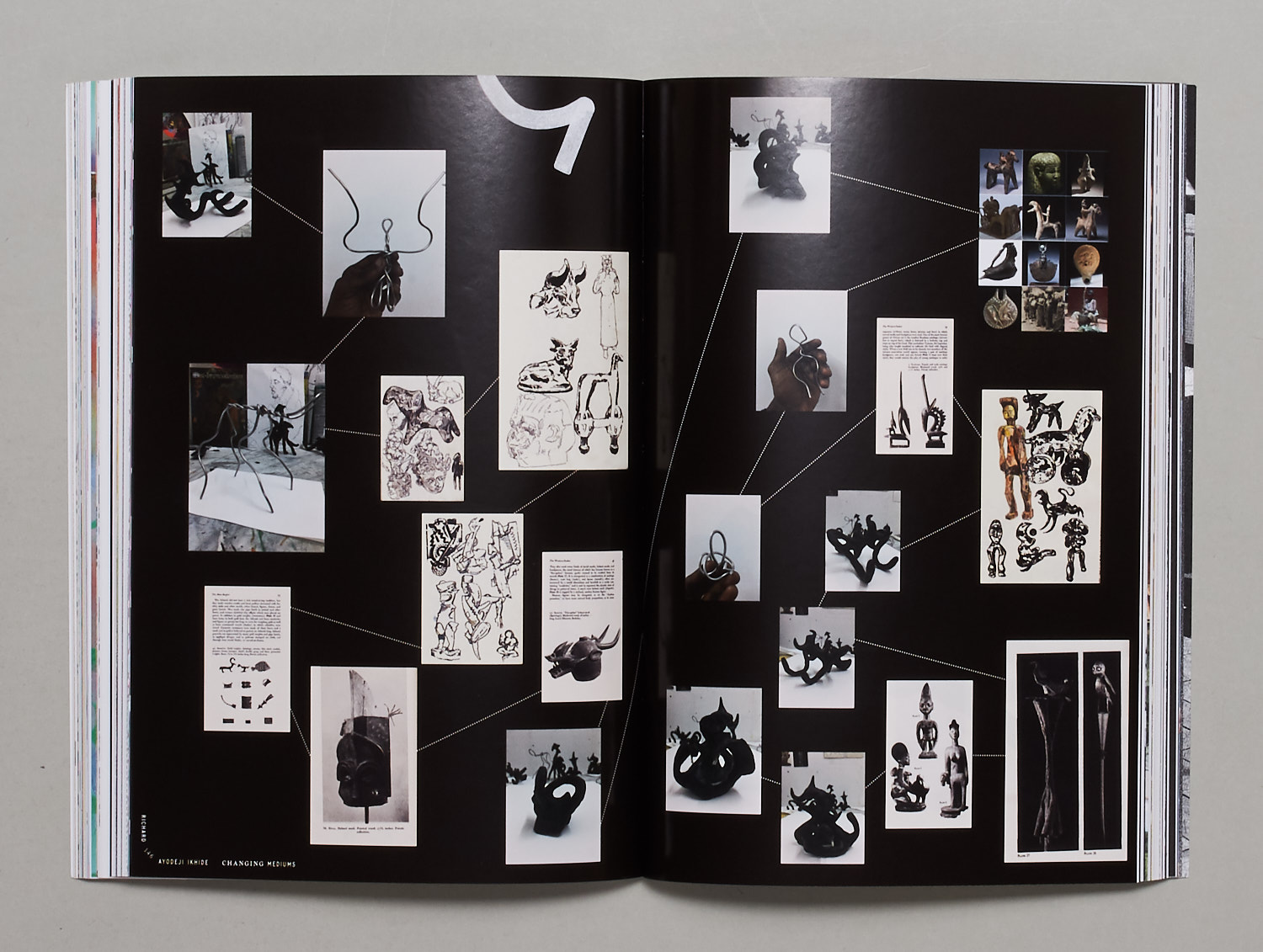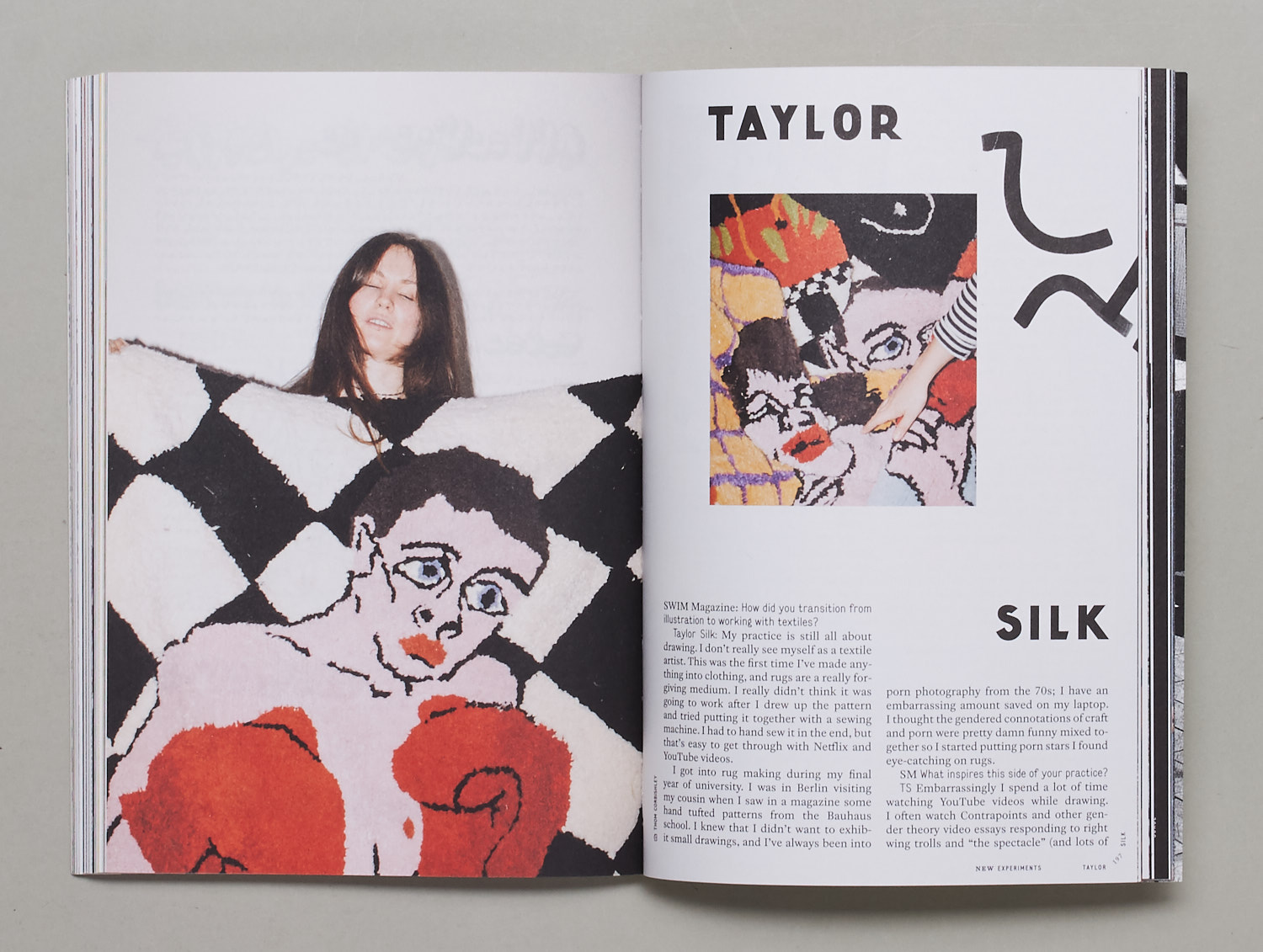This issue of SWIM is an exploration into how and why artists change mediums. From photographs by painters to paintings by musicians, it showcases work that signifies a shift in an artist’s practice. It also ventures deeper into the subject of the medium, investigating topics such as how mediums change over time, how one can be used to imitate and create another, and how the medium affects the message.
With many artists identifying as multi-media artists, and with an abundance of old and new methods and tools at their disposal, what sort of relationships are forged between their various disciplines? How does the way they paint affect the way they take a photograph? Does there exist a hierarchy within their practice? These are the sorts of questions this issue addresses.
Inside you will find essays that look at the history of the medium, the roles it can play and the boundaries it can transcend: Izabela Anna Moren examines the work of multidisciplinary research group Forensic Architecture, asking us to define its unique, many-sided approach to investigating human rights violations. Though it often exhibits its work at art institutions, can we ultimately define its output as art, and if so, as what medium? Meanwhile, Andrew Hunt speaks to visual artist Polly Apfelbaum about “opening painting up” to encompass sculpture, tapestry, fashion, publishing and handwriting. The artist draws parallels between these facets of her practice, explaining how and where they converge. Finally, Juliet Perry explores the influence of word-art through the position it can take in multiple mediums. Writing from the perspective of the text, as if it were sentient, Perry discusses its experience with its audience first-hand.
In a sense, this issue is not just about breaking boundaries, but also changing what those boundaries are. It’s about redefining what a painting can be, what constitutes a photograph, and what qualifies as graphic design. For example, in an age where digital methods are used to imitate traditional, physical mediums, can we refer to these artworks using the same terminology (i.e. digital paintings), despite sharing only aesthetic similarities? Given the widely accepted usage of such terms, where do we draw the line? Are paintings, made digitally, using photographs, still paintings?
As always, the idea behind the cover design corresponds with the theme of the issue; each copy features a hand-painted and screen-printed cover that has been lovingly and painstakingly created as a change of the medium through which it would conventionally be made. This means that each copy will be totally unique and will differ slightly from the design shown here.
Contributors:
Amy Bessone, Andrew Hunt, Apolonia Sokol, Carmen Winant, Charlie Ratcliffe, Christian Newell, Devendra Banhart, Devin Troy Strother, Fraser Muggeridge, Ian T Miller, Izabela Anna Moren, Jannis Varelas, Joao Gabriel, John Lurie, Joy Miessi, Juliana Futter, Juliet Perry, Krystof Witold, Marvin Leuvrey, Mattea Perrotta, Matthew Raw, Richard Ayodeji, Richard Woods, Taylor Silk, Thierry Noir, Tinka Bechert, Yuko Obe, Yushi Li
-
232 pgs, 24 × 16.5 cm, Softcover, 2019,














